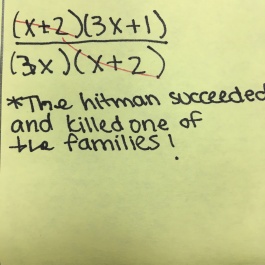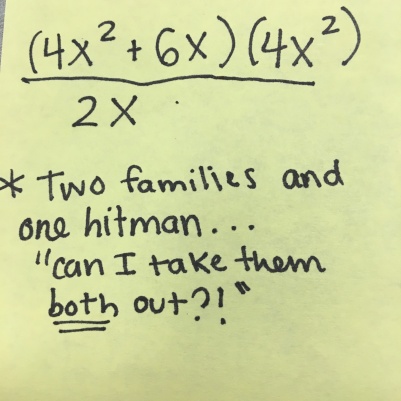We are preparing for midterms, and for my Algebra 2 class, I decided to do a Socratic Seminar to review the all of the material. Instead of giving my students a list of topics that would be on the midterm, they created their own list by looking through their notes and tests and discussing the past semester. 
My students were set up into two circles. Students on the inside circle had to discuss the questions prompted on the board. All students on the inside circle had to talk once before anyone else in the circle could speak again. This had all students looking through their notes and past test and participating in the review. They were coming up with what was important an d narrowed down the topics that they struggled with the most. I added in a few questions in verbally when I felt they got stuck or could push the topic further.
d narrowed down the topics that they struggled with the most. I added in a few questions in verbally when I felt they got stuck or could push the topic further.
Being able to verbalize the concepts they needed to know and the concepts they needed to work was extremely helpful for my students.
While the inside circle was discussing the prompted questions, the  outside circle was discussing the questions on a back channel chat. They were writing down the topics that they needed to know/work-on and went into more detail about the concepts than the inner circle.
outside circle was discussing the questions on a back channel chat. They were writing down the topics that they needed to know/work-on and went into more detail about the concepts than the inner circle.
For backchanneling, I have used
They both work really well and are extremely teacher/student friendly.
For this seminar, I used Today’s Meet. If you would like to embed your backchannel into your class page, it is extremely easy. By clicking class too ls at the bottom of your chat, it allows you embed the live stream or transcript to your page.
ls at the bottom of your chat, it allows you embed the live stream or transcript to your page.
This back channel chat was embedded “live stream” into their Haiku page, so it was easy to get to and they can refer back to it to study.
 For this seminar, I had students switch circles for every chapter. I asked the same questions for each chapter. I had questions appear one at a time.
For this seminar, I had students switch circles for every chapter. I asked the same questions for each chapter. I had questions appear one at a time.
I love doing Socratic seminars in my classes. Talking about concepts and explaining them to their peers really helps students truly understand the concept. This activity also had them reflect on everything they learned this year. I think reflecting on their past test, instead of just looking at them, was also really beneficial.
A video of my seminar can be found here.
I would love to hear if you have any suggestions or ways to improve and use Socratic Seminars. I also love trying new back channeling sites, if you have tried one that works well I would love to hear about it!
























 g about killing off family members of the Mafia.
g about killing off family members of the Mafia.






 t to see if they discount remained the same!
t to see if they discount remained the same!


